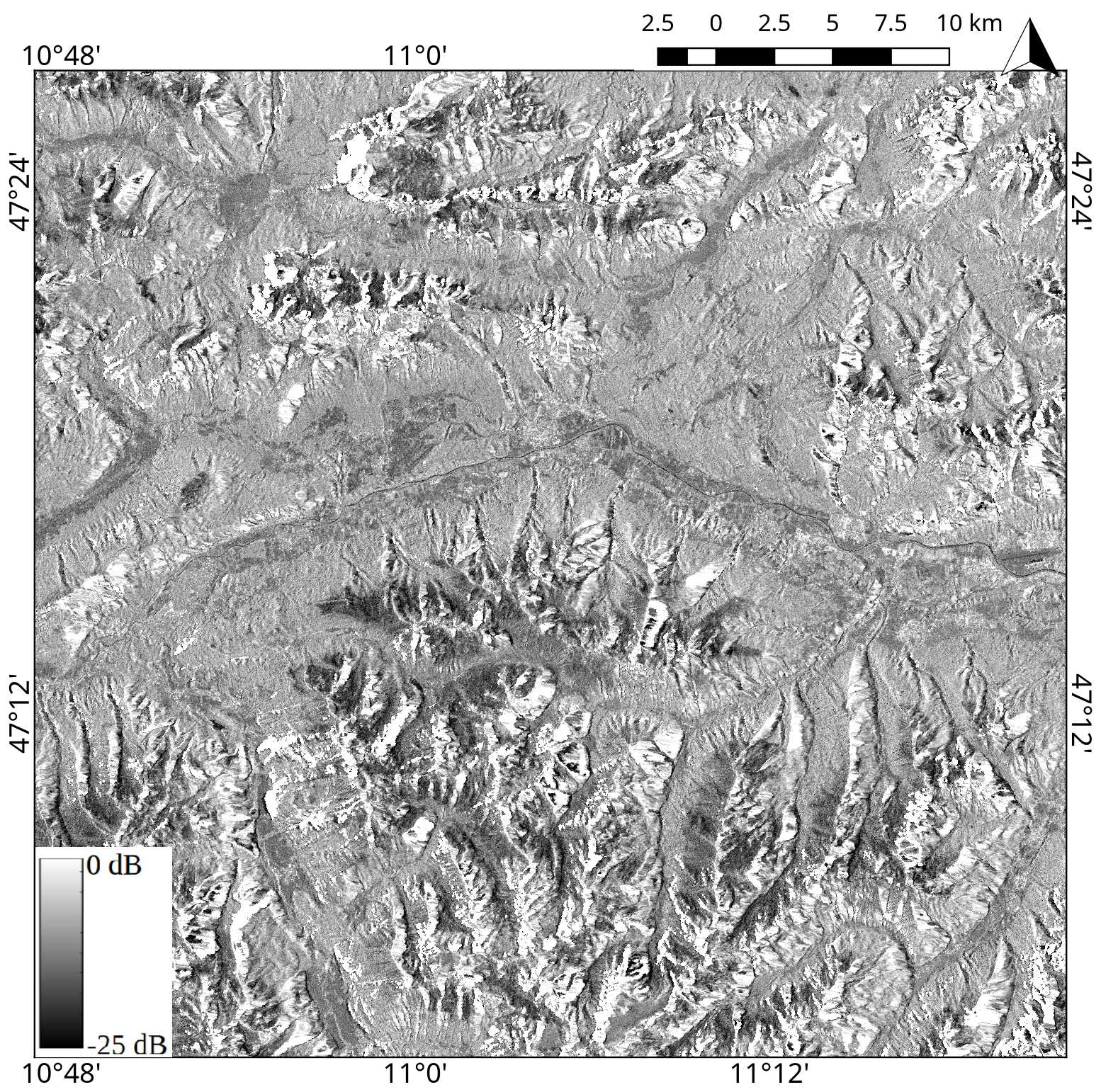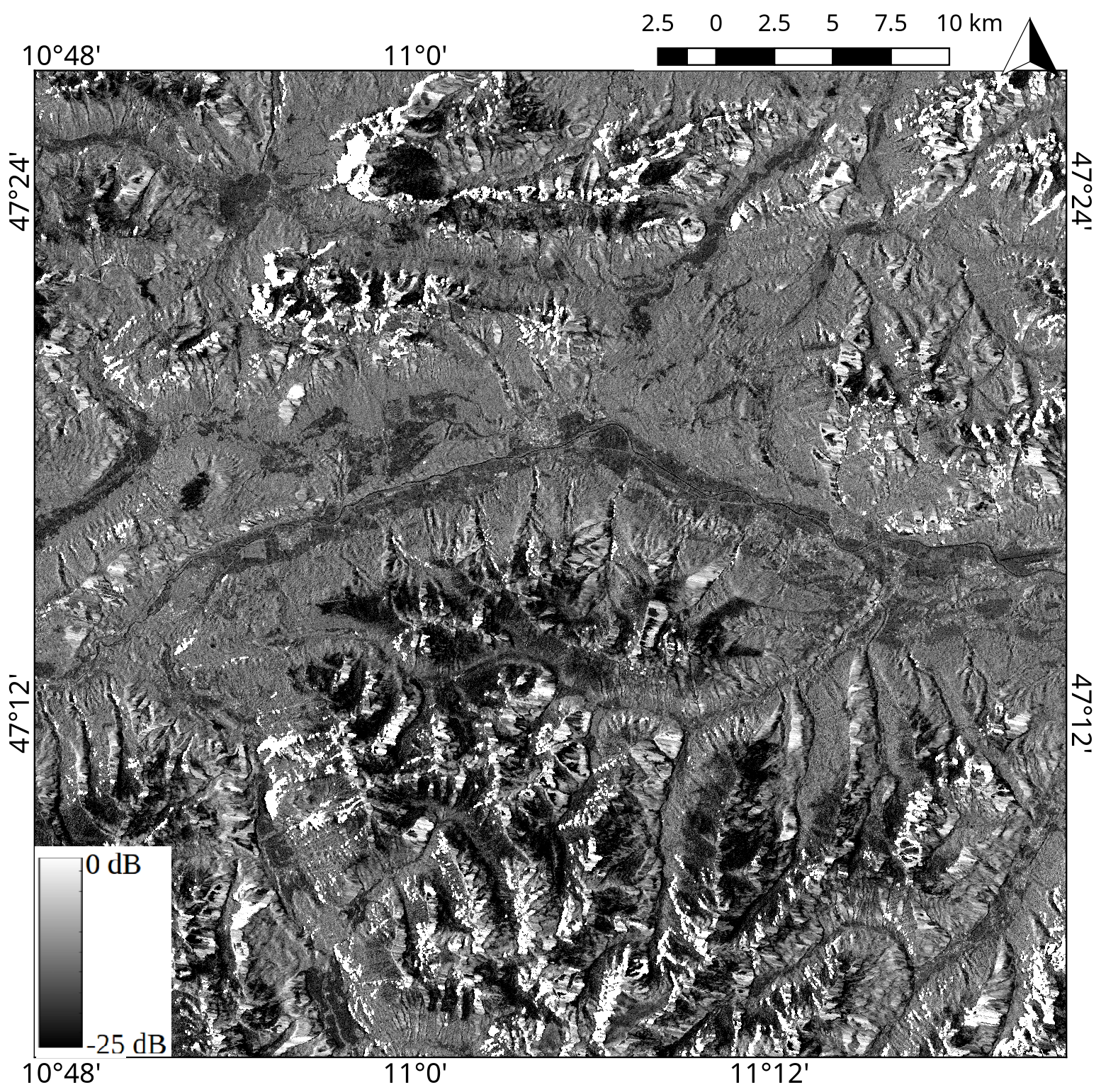Gamma Nought (GMR) or terrain-flattened Gamma Nought is a new concept that integrates terrain variations into the variation of the reflected radar signal.
Product overview
Gamma Nought (GMR) or terrain-flattened Gamma nought is a new concept that integrates terrain variations into the variation of the reflected radar signal. Therefore, the characteristics and data format of this product are very similar to Sigma Nought, except the nature of the contained data. Since an Austrian high-resolution digital elevation model (DEM) was used in this project, it is now capable to generate GMR product at a very high resolution of 20m, instead of ~200m if using the popular 90m SRTM DEM.
Product description
The processing of GMR product is carried out using the TU Wien SAR Geophysical Retrieval Toolbox (SGRT), which is the software for geophysical parameters retrieval from SAR imagery developed at TU Wien. In the following sub-sections, the main characteristics and data format of Sentinel-1 GMR product provided by TU Wien will be presented.
Product variables
The following table presents the data format of the GMR product after the processing at TU Wien.
| Code name | Scaling factor | Units | Type | Pixel size (m) | Image dimension | No-data | Number of bands |
|---|---|---|---|---|---|---|---|
| GMR | 100 | Decibel | int16 | 10,10 | 10000x10000 | -9999 | 1 |
Overview of Sentinel-1 Gamma nought product
Area and time period
GMR product is provided over the area of Austria from 01st January 2016 to the present.
Temporal resolution
The temporal resolution of GMR product is up to 3-4 days over Austria in practical.
Polarisation
Similar to Sigma Nought, the polarisation of GMR product depends on the polarisation of input Sentinel-1 data. In the case of dual-polarised input Sentinel-1 data, different polarisation will be stored in separated files. This leads to the fact that one dual-polarised Sentinel-1 input files, after processing, will produce two GMR images with the same time stamp.
The figure below is a visualisation of VV and VH-polarised GMR for the same area, with the same color scale.
 |  |
Sentinel-1 Gamma nought or backscatter coefficient product at 10m spatial sampling, retrieved with VV polarisation (left) and VH polarisation (right). The scene covers the area of western Innsbruck, Austria, taken on 21st April 2016, 5:26:30.
Image timestamps
The timestamps of GMR product can be found in the filename, according to Sentinel file naming convention. It can also be found in the GeoTIFF header.
Spatial resolution and sampling
After the pre-processing at TU Wien, the GMR images are tiled and georeferenced using the TU Wien Equi7(see Data specifications and formats) and have easting and northing coordinates with the pixel spacing of 10m.
Original data format
The GMR data is originally stored and delivered in GeoTIFF format. GeoTIFF is a standard which allows storing georeferencing information within a TIFF raster image.

Sentinel-1 Gamma nought product at 10m spatial sampling, retrieved with VH polarisation. The scene covers the area of western Innsbruck, Austria, taken on 21st April 2016, 5:26:30.
| Product Name | Gamma nought |
|---|---|
| Code Name | GMR |
| Category | Sentinel-1 products |
| Spatial Sampling | 10m |
| Temporal Resolution | 3-4 days |
| Unit | Decibel |